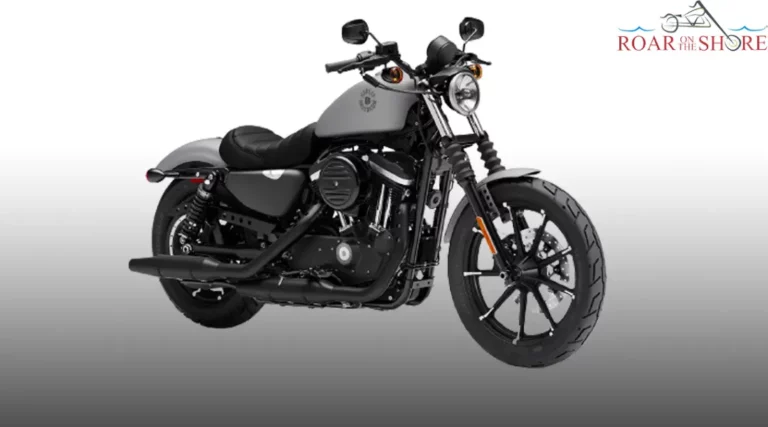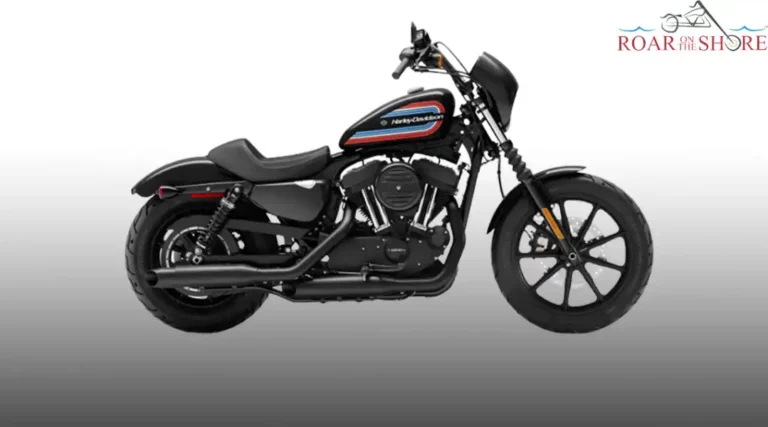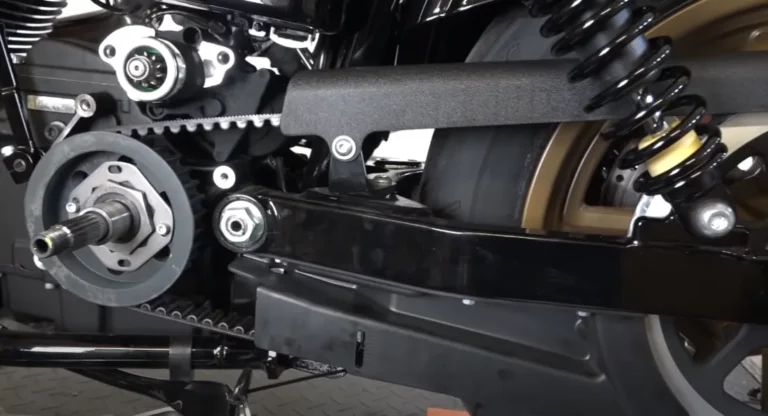Harley Davidson Air Suspension Chart – Find The Ideal Pressure
A Harely Davidson air suspension chart is your short getaway to air pressure recommendations across different Harley-Davidson suspensions. With this chart handy, it’s easy to ensure the proper adjustment of your air shocks, so your rides are always well-balanced, comfortable, and safe.
Typically, your Harley-Davidson’s suspension pressure depends on how much weight you’re carrying and whether you’re riding solo or with another person. Let me quickly explain with this short guide, complete with the air suspension chart you’re looking for.
How to Understand the Harley-Davidson Air Suspension Chart?
Before you look up the chart, let’s first help you understand how you’d interpret it, which is actually pretty straightforward.
The air suspension chart has two primary weight categories, depending on whether you ride solo or with a partner. And there’s another column, showing you the recommended pressure accordingly.
In most cases, the suspension pressure is expressed in PSIs, which stands for pounds per square inch. However, in Europe, kilopascals, or kPa, are commonly used instead.
Read Also: Harley Davidson Fluid Capacity Chart: A Must-Read Resource
Harley Davidson Air Suspension Chart
Now let’s analyze the specific air suspension charts for the most common systems. Typically, air suspensions on Harley are either standard or low profile, and each has its own recommended pressure settings. Let’s take a look.
Chart 1: All Harley-Davidson models with Standard Shocks
| Shock Load | Total Weight | Pressure (PSI) | Pressure (kPa) |
| Solo Rider | Around 150 lbs (68 kg) Average Rider | 0 | 0 |
| Solo Rider | 150-200 lbs (68-91 kg) | 0-10 | 0-69 |
| Solo Rider | 200-250 lbs (91-113 kg) | 10-May | 35-103 |
| Rider with passenger | Around 150 lbs (0-68 kg) | 15-Oct | 69-103 |
| Rider with passenger | More than 200 lbs (over 91 kg) | 20-25 | 138-172 |
| Maximum GVWR | 20-35 | 138-241 |
Chart 2: Harley-Davidson FLHRS with Low-Profile Shocks (Road King Models)
| Shock Load | Total Weight | Pressure (PSI) | Pressure (kPa) |
| Solo Rider | Around 160 lbs. (0-73 kg) | 0-5 | 0-35 |
| Solo Rider | 160-200 lbs (73-91 kg) | 0-10 | 0-69 |
| Solo Rider | More than 200 lbs (91 kg) | 10-May | 35-69 |
| Rider with passenger | Around 150 lbs (0-68 kg) | 20-30 | 138-207 |
| Rider with passenger | More than 150 lbs (over 68 kg) | 25-35 | 172-241 |
| Maximum GVWR | 40-50 | 276-345 |
Read Also: Harley Exhaust Fitment Chart: Road to Perfect Fit For Your Harley
Why Is Adjusting the Air Suspension Important for Harley-Davidson Motorcycles?
The main goal of adjusting the air suspension in Harelys is to maintain riding comfort, balance, and safety. Yet, this often becomes more of a necessity than a choice. Here’s why.
Easy Loading
Firstly, adjusting the air suspensions can prevent sagging in your Harley’s rear, whether you’re carrying some extra weight or a person. The adjusted pressure lifts up the back high enough to support the added load. And it also prolongs your suspension’s life for good measure.
Steady Riding
Likewise, you must readjust the shocks when you no longer need to carry any added load. This is because your ride quality and steadiness greatly depend on your riding height, which you must lower, once it has been raised to carry loads.
Customized Rides
Your Harley’s shocks are meant to wear down over time, as is the riding height you initially preferred. That’s why, sooner or later, you must adjust your air suspensions according to how you like them—soft or firm.
Risking Bottom-Outs
Bottomed-out suspensions are those deflected to the maximum amount of travel possible. Meaning, the suspension has no more room to compress. This can lead to a loss of control and may damage your motorcycle. Thankfully, you can avoid this by regularly adjusting the shocks.
Read Also: Harley Wheel Interchange Chart: Everything You Need To Know!
How to Adjust Air Suspensions in Harley-Davidson Motorcycles?
As you now know what pressure levels suit you best and why it’s important, the big question is how you adjust the pressure accordingly.
Well, as it turns out, the process is pretty simple and it only takes a few minutes. All you need is the right tools and follow the proper steps. Here’s what you’ll need to do.
Step 1: Gather the Necessary Tools
Before you begin, be sure to have the following tools handy:
- An air pressure gauge. It must be compatible with your Harley-Davidson’s air suspension system.
- An air pump with adjustable pressure settings.
Step 2: Locate the Suspension’s Valve Stem
To start, you need to find the valve stem on your Harley’s suspension. In most models, it’s under the left saddlebag.
Step 3: Measure the Current Air Suspension Pressure
Once you’ve found it, remove the valve’s cap and attach the pressure gauge to your suspension system. Now read how much pressure it’s already under and determine how much to add or release. Of course, you should refer to the chart we’ve shared.
Step 4: Adjust the Air Suspension Pressure
After determining the recommended pressure, use the air pump to adjust the suspensions. Be careful not to overdo or underdo it, as this may affect your riding and handling significantly. You can press the pump’s release button if you need to release excess air pressure.
Step 5: Recheck and Test-Drive
Once you’re done adjusting, recheck and match the recommended pressure with the chart again before removing the pump and replacing the cap. And once you feel ready, go for a test ride to make sure your suspensions are now stiff enough for better handling.
Read Also: Harley Davidson Helmet Size Chart
Frequently Asked Questions
Do you have further questions regarding the Harley Davidson air suspension chart? You can check the following answers to some of the most commonly asked questions for further details.
How Often Should I Check The Air Pressure In My Harley Davidson Air Suspension?
Air shocks are meant to lose air over time. So, it’s best to check your Harley’s air suspension pressure periodically and also before any long ride. Besides, it’s also good to know that your shocks must have a leak or a similar issue if they need air more than once a month.
What Happens If The Air Pressure In The Harley Davidson Air Suspension Is Too High?
Too much pressure on air-sprung suspensions can damage your HD’s components and cause them to fail prematurely. This is because the suspension system is designed to work within a certain range of air pressure and load, which shouldn’t be exceeded.
How To Tell If The Air Pressure In The Harley Davidson Air Suspension Needs To Be Adjusted?
The easy way to tell if the air pressure in your Harley’s air suspension needs adjustment is when the rear suspension bottoms out or bounces in the saddle. Also, you can check the existing pressure using a gauge and match it with the chart to see if it has the recommended level.
How Long Do Harley Davidson Air Shocks Last?
The lifespan of Harley Davidson air shocks depends on various factors such as the quality of the shocks, the frequency of use, and the weight of the rider. However, in general, you can expect yours to last anywhere between 10,000-50,000 miles.
Conclusion
So, there you have it. Your short but comprehensive guide to Harley Davidson air suspension chart, complete with every piece of information you might need.
Always remember that maintaining the air suspension on your Harley-Davidson is just as important as keeping the correct pressure level.
So, pay attention to things like lubricating the shock bushings and reducing friction, so your rides are as enjoyable as always.
Read Also: Harley Davidson Tire Pressure Chart – Ride Safe And Steady




![How To Check Primary Oil On Harley Davidson? [6 Easy Steps]](https://www.roarontheshore.com/wp-content/uploads/2023/06/How-To-Check-Primary-Oil-On-Harley-Davidson-768x419.webp)
